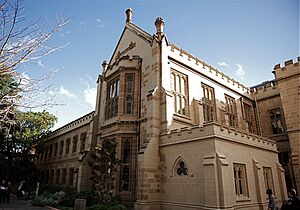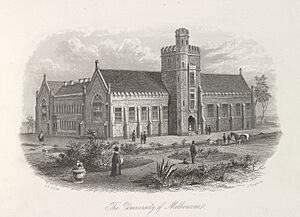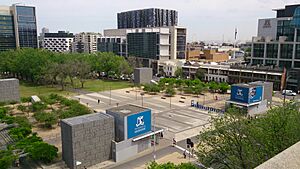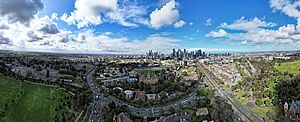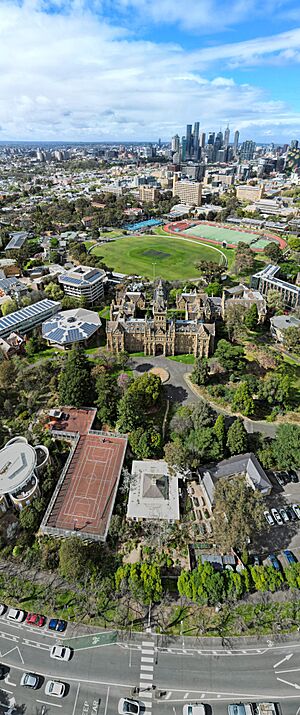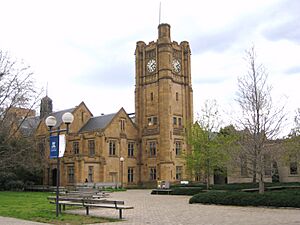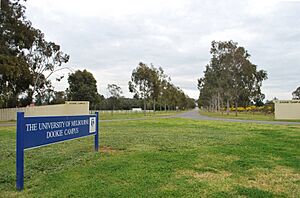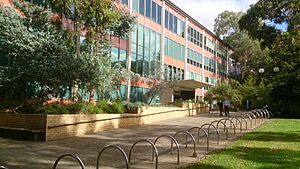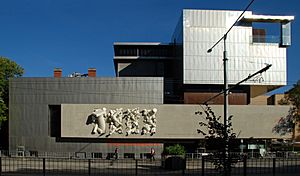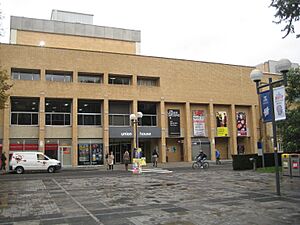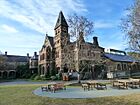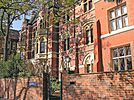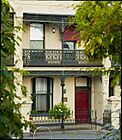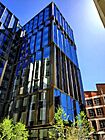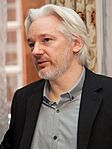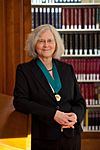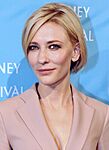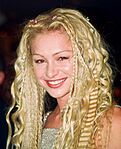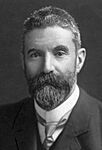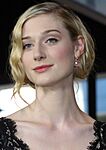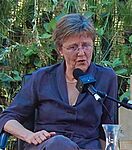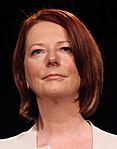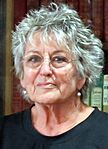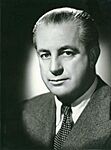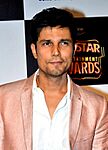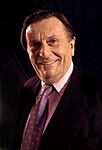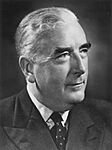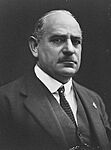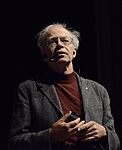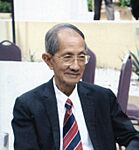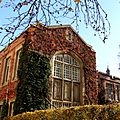University of Melbourne facts for kids

|
|
| Latin: Universitas Melburniensis | |
|
Other name
|
Melbourne University |
|---|---|
| Motto |
Latin: Postera Crescam Laude
|
|
Motto in English
|
"I shall grow in the esteem of future generations" |
| Type | Public research university |
| Established | 22 January 1853 |
| Accreditation | TEQSA |
|
Academic affiliation
|
|
| Endowment | AU$1.287 billion (2022) |
| Chancellor | Jane Hansen |
| Vice-Chancellor | Emma Johnston |
|
Academic staff
|
5,186 (FTE, 2023) |
|
Administrative staff
|
5,328 (FTE, 2023) |
|
Total staff
|
10,514 (FTE, 2023) |
| Students | 53,963 (EFTSL, 2023) |
| Undergraduates | 27,146 (EFTSL, 2023) |
| Postgraduates | 23,113 coursework (EFTSL, 2023) 3,703 research (EFTSL, 2023) |
| Location |
,
,
37°47′47″S 144°57′41″E / 37.7963°S 144.9614°E |
| Campus | Urban and regional with multiple sites 35.2 hectares (0.35 km2) (Parkville Campus) 2,507 hectares (25.1 km2) (Total) |
| Colours | Traditional Heritage Heritage Dark |
|
Sporting affiliations
|
|
| Mascot | Barry the Bear |
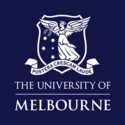 |
|
The University of Melbourne is a public research university in Melbourne, Australia. It was started in 1853, making it Australia's second oldest university. It is the oldest university in the state of Victoria. Its main campus is in Parkville, just north of Melbourne's city center. There are also other campuses across Victoria.
The University of Melbourne is one of Australia's "sandstone universities." These are older, well-known universities. It is also part of important groups like the Group of Eight. Since 1872, many independent student homes, called residential colleges, have joined the university. They offer places to live for students and teachers. They also have academic, sports, and cultural activities.
The university has ten main academic areas. It also works with many research centers. These include the Walter and Eliza Hall Institute of Medical Research. The university has fifteen graduate schools. These are for students who want to study more after their first degree.
Many important people have studied at the University of Melbourne. This includes four Australian prime ministers. Nine Nobel Laureates have also taught or studied there. This is more than any other Australian university.
Contents
- University History
- University Campuses and Buildings
- University Structure
- Academic Profile
- Student Life
- Notable People
- Images for kids
- See also
University History
How the University Started
The University of Melbourne began after a plan by Hugh Childers in 1852. He was a government official who set aside money for a university. The university was officially created on January 22, 1853. It was given the power to offer degrees in arts, medicine, law, and music.
The first buildings were opened on October 3, 1855. Classes started with three professors and sixteen students. Only four of those first students graduated. The first chancellor, Redmond Barry, was from Ireland, like the professors. The university was built with money from Victoria's gold rush. It was meant to bring a "civilizing influence" during a time of fast growth.
A law school opened in 1857. Engineering and medicine schools followed in the early 1860s. In 1881, women were allowed to join the university. This was a big step forward. Julia 'Bella' Guerin was the first woman to graduate from an Australian university in 1883. She earned a Bachelor of Arts degree.
Growth in the 1900s
In the early 1900s, the university added more practical courses. By 1901, over 500 students were enrolled. A Diploma of Education was created in 1903. The university kept growing, even after some financial problems. New buildings were constructed between 1900 and 1906.
This growth was helped by more government money. The university also started a fundraising campaign. A School of Dentistry was created to teach the science behind dental care. Agriculture courses began in 1911. During this time, the university became a leader in research in Australia. After World War II, many more people wanted to go to university. This led to big changes and growth for the university.
Changes from 1980 to 2000s
The university grew a lot in the 1980s and 1990s. It joined with several other colleges. For example, the Melbourne Teachers' College became part of the Faculty of Education in 1988. By this time, over 35,000 students were attending the university. This joining of colleges continued into the 1990s. The Victorian College of the Arts joined in 1992. This added more campuses to the university.
In 2001, the Melbourne School of Population Health was created. It was the first of its kind in Australia. This school brought together many different study areas. They researched topics like Indigenous health and mental health.
In 2008, the university changed its courses a lot. This new plan was called the Melbourne Model. Instead of many different degrees, students first took one of six general bachelor's degrees. After that, they could specialize in a professional or research graduate course. This change was influenced by universities in North America. It was also inspired by the Bologna process, which aims to make university degrees similar across Europe.
The Melbourne Model was a bit controversial. Some students and staff worried about job cuts and changes to subjects. However, the University of Western Australia is the only other Australian university to use a similar structure.
Recent Years (2010s to Present)
Between 2013 and 2015, the university changed its administration. This led to about 500 administrative staff losing their jobs. At the same time, the university spent $2 billion on new buildings. This was a huge building program.
In 2019, there were concerns about the workplace culture in the Faculty of Arts. Some senior staff left their jobs. There was also discussion about the high salary of the Vice-Chancellor at the time.
Like other Australian universities, the University of Melbourne saw a big increase in international students. This meant the university relied more on money from these students.
In 2020, teaching moved mostly online because of the COVID-19 pandemic. This was due to social distancing rules. Teachers used online tools like Zoom and Microsoft Teams. The university announced job cuts for 450 staff in 2020. More job losses happened in 2021 when teaching moved online again.
The university also faced issues with underpaying casual staff. In 2021, the Vice-Chancellor apologized for this. The university had to pay back $9.5 million to over 1,000 staff members.
In 2021, the government approved a new campus for the university at Fishermans Bend. This $2 billion campus is planned to open in 2026. It will focus on engineering.
In June 2021, a new speech policy was put in place. It aimed to protect transgender people while keeping freedom of speech. In 2023, a building was damaged with graffiti related to this issue.
In August 2023, some union members went on strike. They were asking for a 15% wage increase over three years.
In April 2024, students protested on campus. They were showing support for pro-Palestine movements. They wanted the university to share information about its investments. They also wanted to know about research ties with companies that might benefit from the conflict in Gaza. Students occupied a building and renamed it after a Palestinian student who died.
In April 2024, Vice-Chancellor Duncan Maskell announced he would step down by early 2025. Emma Johnston was appointed as the next Vice-Chancellor in September 2024. She is the first woman to hold this position.
The university was investigated for possibly using surveillance technology during the protests. This was to see if they broke privacy laws.
University Campuses and Buildings
The University of Melbourne has several campuses. Three are in Melbourne: Burnley, Southbank, and Werribee. The Burnley campus teaches gardening courses. The Southbank campus is for performing arts, visual arts, film, and music. Veterinary science is taught at the Werribee campus.
In regional Victoria, the Creswick campus is for forestry courses. The Dookie campus is for agriculture. The Shepparton campus has a Rural Health Academic Centre.
A new campus is being planned for Fishermans Bend. It will be used for engineering and architecture studies.
Parkville Campus
The Parkville campus is the main campus. It started in a large area north of Grattan Street in Parkville. It has grown to include buildings in nearby Carlton. The campus has many cafes, gyms, libraries, and shops. It is also near eight hospitals and many research institutes.
Some of the oldest buildings, like the Old Quad, have a Gothic revival style. The Old Quad was restored in 2019. It now has a special exhibition space.
Bronze plaques along Professors Walk on this campus honor people who have made great contributions to the university.
The Parkville campus has also been used for filming movies. The new Union and Guild Theatres are located here. From 2025, the Parkville Campus will be easy to reach by train.
Southbank Campus
The Southbank campus is home to the Victorian College of the Arts and the Melbourne Conservatorium of Music. It is in Melbourne's arts area. This campus has special stages, studios, and concert halls for creative arts.
A big project costing A$200 million was finished in 2019. It included a new music conservatorium. Old buildings were also updated for teaching and research.
Burnley Campus
The Burnley Campus is about 5 km east of Melbourne's city center. It focuses on gardening and environmental studies. It has nine hectares of historic gardens. Students can take short courses, degrees, and do research here. It offers training in managing urban landscapes, park management, and tree care.
Creswick Campus
The Creswick campus is 120 km north-west of Melbourne. It is on 15 hectares of land connected to forests. It has offered forest science education since 1910. It is Australia's only campus focused on forest ecosystem science. Scientists here study water, soil, plants, and fires.
Dookie Campus
The Dookie campus has been the university's rural home for agriculture since 1886. It is about 220 km north-east of Melbourne. The campus is very large, covering 2440 hectares. It has student housing, an orchard, a winery, sheep, and a robotic dairy. Students can study agriculture, science, and commerce here.
Shepparton Campus
The Shepparton Medical Centre campus is nearly 200 km north of Melbourne. It is part of the Melbourne Medical School. This campus provides housing for students. The Shepparton Medical Centre was the first teaching clinic built in Australia. It offers healthcare to Shepparton and nearby areas.
Werribee Campus
The Werribee campus is about 30 km south-west of the city. It is home to the Melbourne Veterinary School. The campus recently had a AU$63 million upgrade. This improved facilities for treating pets and training future veterinarians. Victoria's only accredited veterinary course is taught here.
Fishermans Bend Campus
A new engineering campus is being designed at Fishermans Bend. Construction on the first part is expected to start in 2024. It is planned to open in 2026. This campus will be used by the Faculty of Engineering and Information Technology and the Faculty of Architecture, Building and Planning.
University Structure
University Council
The university is governed by a group called the "Council." This group appoints the vice-chancellor. They also approve the university's plans and budget. The head of the Council is the "chancellor." The "academic board" looks after teaching and research.
The University of Melbourne has a clear system for how it operates. The 13-member Council is the main governing body. It sets the university's main goals and rules. Under the Council, there are policies that guide how the university works every day.
Academic Board
The academic board makes sure that teaching, research, and learning are of high quality. The University of Melbourne Executive is the main management team. The university's leaders, including the chancellor and vice-chancellor, guide its overall vision.
Faculties and Departments
As of 2019, the University of Melbourne has nine main faculties. These faculties cover all major areas of study and research:
- Faculty of Architecture, Building and Planning
- Faculty of Arts
- Faculty of Business and Economics
- Faculty of Education
- Faculty of Engineering and Information Technology
- Faculty of Fine Arts and Music
- Melbourne Law School
- Faculty of Medicine, Dentistry and Health Sciences
- Faculty of Science
Faculty of Arts
The Faculty of Arts has five schools:
- Asia Institute: for Asian languages and cultures.
- School of Culture and Communication: for studies in literature, art, media, and Indigenous Australian studies.
- School of Historical and Philosophical Studies: for history, philosophy, and archaeology.
- School of Languages and Linguistics: for European studies and other languages.
- School of Social and Political Sciences.
- Graduate School of Humanities and Social Sciences.
Finances
The University of Melbourne has a large fund of money, about $1.335 billion. This money helps support the university's activities.
The university launched a fundraising campaign called Believe in 2013. By 2016, it had raised $500 million. It aimed to raise even more by 2021.
Academic Profile
Research and Publications
The University of Melbourne says it spends more on research than almost any other organization in Australia. It is a top research university in Australia. It has the most research students in the country.
In 2018, a ranking of scientific papers placed the University of Melbourne 29th globally. It was ranked 1st in Australia. This ranking looks at how many and how good the scientific papers published by a university are. Another ranking, the Center for World University Rankings, placed it 57th in the world in 2018/19. It was also 1st in Australia.
The university is connected to over 100 research centers. In 2010, it spent $813 million on research. It also had the most federal government research scholarships in Australia.
Teaching Structure
The University of Melbourne has a unique way of structuring its courses. It offers nine general three-year degrees for undergraduate students. This system, called the "Melbourne Model," started in 2008. After these general degrees, students can take postgraduate courses. These courses offer more specialized study.
Some professional degrees are only for graduate students. These are master's or doctorate degrees. The university's faculties often have a special graduate school for these degrees.
Entrepreneurship
The university has a special part called the Melbourne Entrepreneurial Centre (MEC). It helps students and staff start new businesses. The university also has a program to help start-ups grow. There is also a training center for entrepreneurs called the Wade Institute of Entrepreneurship.
Libraries and Collections
The University of Melbourne's libraries have over three million visitors each year. They lend out 42 million items. The collection has over 3.5 million items. These include books, DVDs, photos, music, and old maps. The library also has over 32,000 e-books and many digital journals.
The university has twelve libraries across its campuses:
- ABP (Architecture, Building and Planning) Library
- Baillieu Library
- Brownless Biomedical Library
- Burnley, Creswick and Dookie Libraries
- ERC (Eastern Resource Centre) Library
- Giblin Eunson Library
- Law Library
- Southbank Library
- Veterinary and Agricultural Science Libraries
Most libraries focus on specific subjects, except for the Baillieu and ERC libraries. The Student Union also runs a fun library called the Rowden White Library.
Museums and Archives
Grainger Museum
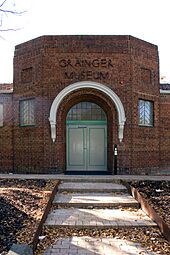
The Grainger Museum is on the Parkville campus. It is the only museum in Australia built to tell one person's life story. It has over 100,000 items. These include photos, costumes, art, and musical instruments. These items were collected by Percy Grainger. He was a famous composer and pianist.
Harry Brookes Allen Museum of Anatomy and Pathology
This museum is also on the Parkville campus. It has one of Australia's largest collections of old anatomical models and real human tissue. It helps medical students learn. It is not usually open to the public.
Henry Forman Atkinson Dental Museum
This museum is at the Melbourne Dental School on the Parkville campus. It is the oldest dental collection in Australia. It has over 3,500 objects, photos, and documents.
Ian Potter Museum of Art
The Ian Potter Museum of Art is the university's main art museum. It is on the Parkville campus. Since it started in 1972, it has hosted over 500 exhibitions. The museum has more than 18,000 art pieces. These range from ancient to modern art.
Medical History Museum
The Medical History Museum is inside the Brownless Biomedical Library on the Parkville campus. It offers exhibitions and educational programs.
Ed Muirhead Physics Museum
This museum is in the School of Physics building on the Parkville campus. It is named after Ed Muirhead, a former physics chairman. The museum has old scientific tools. Many were built by past professors for research.
Tiegs Museum
The Tiegs Museum is in the BioSciences building on the Parkville campus. It has a collection of animal specimens gathered over 120 years. It is named after Oscar Tiegs, a former professor. The collection includes everything from small insects to skeletons of large animals.
Galleries and Exhibitions
Fiona & Sidney Myer Gallery
This gallery is on the Southbank campus. It is in Melbourne's Arts Precinct. It is a place for artists from the Victorian College of the Arts to show their new work. It helps connect artists, teachers, students, and the public.
Noel Shaw Gallery
The Noel Shaw Gallery is inside the Baillieu Library on the Parkville campus. It opened in 2014. It shows two exhibitions each year. These exhibitions are often linked to what students are learning.
Buxton Contemporary
Buxton Contemporary is an art museum on the Southbank campus. It opened in 2018. It has four public exhibition spaces. It also has teaching facilities and an outdoor screen for video art. The museum was a gift to the university from art collector Michael Buxton.
Science Gallery
Science Gallery Melbourne opened in 2021 on the Parkville campus. This large gallery combines art and science in its exhibitions. It is part of a global network of Science Galleries.
Other Collections
Dax Centre
The Dax Centre is on the Parkville campus. It is named after Eric Cunningham Dax. He used art to help people understand mental health. The center has exhibitions and programs to promote mental health. It also holds the Cunningham Dax Collection of art.
Herbarium
The University of Melbourne Herbarium is a collection of plants. It is used for teaching and research in the School of Biosciences.
University Rankings
| University rankings | |
|---|---|
| QS World | 19 |
| ARWU World | 37 |
| US News World | 30 |
| Australian rankings | |
The University of Melbourne is highly ranked among universities worldwide. In 2024, it was ranked 23rd globally. It was also ranked 1st in Australia.
- Global Rankings
In the 2026 Quacquarelli Symonds World University Rankings, the university was ranked 19th globally. It was 1st in Australia.
In the Times Higher Education World University Rankings 2025, it was ranked 39th globally. It was also 1st in Australia.
In the 2024 Academic Ranking of World Universities, the university was ranked 37th globally. It was 1st in Australia.
In the 2025–2026 U.S. News & World Report Best Global Universities, it was ranked 30th globally. It was 2nd in Australia.
In the CWTS Leiden Ranking 2024, the university was ranked 36th globally. It was 1st in Australia.
Student Outcomes
The Australian Government surveys students about their experience and job outcomes. In 2023, employers were very happy with graduates from the university, with an 85.4% satisfaction rate.
In 2023, 67.7% of undergraduate students found full-time jobs. For postgraduate students, this was 88.3%. The starting salary for undergraduates was about AUD$65,300. For postgraduates, it was about AUD$88,000.
Students also rated their overall education experience. Undergraduates rated it 73.8% in 2023. Postgraduates rated it 73.9%.
Admissions
The university has high entry requirements. In 2009, the average entry score for undergraduates was 94.05. Many top high school students choose to study here.
For Australian students, a special entry program called Access Melbourne is available. This program helps students from disadvantaged backgrounds. It also helps students from rural areas or those with difficult circumstances. This program can offer guaranteed entry with slightly lower scores.
International students make up 44% of the university's student body.
Student Life
Student Groups and Clubs
There are two main student groups at the University of Melbourne. These are the University of Melbourne Student Union (UMSU) and the Graduate Student Association (GSA). UMSU was started in 1884. It helps students connect and provides resources. The GSA supports graduate students.
The university has over 200 clubs. These clubs cover many interests, like culture, politics, languages, and sports. Over 25,000 students are members of UMSU-affiliated clubs. The GSA has over 100 groups with more than 36,000 members.
UMSU also publishes a student magazine called Farrago. The UMSU Theatre Department moved to a new building in 2022. It has two theatres for performances.
Sports and Athletics

Melbourne University Sport (MU Sport) manages all sports and fitness activities. It also helps elite athletes join the university. Students, staff, and alumni can use the fitness center.
MU Sport offers many sports clubs. These include basketball, cricket, soccer, swimming, and more.
The Melbourne University Football Club started in 1859. It is one of the oldest Australian rules football clubs in the world. The Melbourne University Lacrosse Club (MULC) started in 1883. It is the oldest continuously running lacrosse club in the world. The Melbourne University Cycling Club has won many championships. The Melbourne University Tennis Club started in 1882. The Melbourne University Boat Club is the oldest rowing club in Australia.
Melbourne University's men's basketball team joined the Big V Championship Men's competition in 2023. In 2024, the women's team won the Big V Division Two title. Both men's and women's teams also play in the University Basketball League (UBL). The men's team won the 2023 UBL title.
The university has many sports facilities. These include a gym, fitness programs, group classes, and a swimming pool. There are also squash courts and multipurpose stadiums.
Residential Colleges
The University of Melbourne has nine independent residential colleges. Seven of these are located around the cricket oval on the northern edge of the campus. This area is known as College Crescent. The other two are located outside the university grounds. These colleges provide accommodation and a community for students.
| Trinity College | Ormond College | Janet Clarke Hall | Queen's College | St Mary's College |
| Newman College | University College 1937–present |
Graduate House | St Hilda's College |
Most of these colleges also accept students from other universities like RMIT University and Monash University, Parkville campus.
Halls of Residence
The university owns six halls of residence. Five of them, International House, Wilam Hall (formerly Medley Hall), Little Hall, Lisa Bellear House, and The Lofts, offer living facilities to students of any course. One hall, W.T. Kendall Hall, is for veterinary science students who need to train at a university outpost.
| Wilam Hall (formerly Medley Hall) |
International House | Kendall Hall 1967–present |
Lisa Bellear House 2019–present |
Little Hall | The Lofts 2022–present |
Notable People
Chancellors
The Chancellor is the head of the University Council. They are the ceremonial leader of the university. Here are some of the people who have been Chancellor:
- Sir Redmond Barry: 1853–1880
- Sir William Foster Stawell: 1881–1882
- Sir John Madden: 1897–1918
- Sir John Henry MacFarland: 1918–1935
- Sir Robert Gordon Menzies: 1967–1972
- Jane Hansen: 2023–Present
Vice-Chancellors
The Vice-Chancellor leads the university's daily operations. Here are some of the people who have been Vice-Chancellor:
- Hugh Childers: 1853–1857
- Sir John Monash: 1923–1931
- Sir George Paton: 1951–1968
- Glyn Davis: 2005–2018
- Duncan Maskell: 2018–2025
- Emma Johnston: 2025–present
Nobel Laureates
Many Nobel Prize winners have studied or worked at the University of Melbourne. These include:
- Elizabeth Blackburn, Nobel Prize in Physiology or Medicine (2009)
- Sir John Eccles, Nobel Prize in Physiology or Medicine (1963)
- Sir Frank Macfarlane Burnet, Nobel Prize in Physiology or Medicine (1960)
- Joshua Lederberg, Nobel Prize in Physiology or Medicine (1958)
- Howard Florey, Nobel Prize in Physiology or Medicine (1945)
- Sir James Mirrlees, Nobel Prize in Economic Science (1996)
- Bert Sakmann, Nobel Prize in Physiology or Medicine (1991)
Notable Alumni
The University of Melbourne has many famous graduates. They have become prime ministers, governors, judges, and Nobel Prize winners. They are also leaders in science, arts, and business. Frances Dorothy Gray was Australia's first female dental science graduate in 1907.
- Notable University of Melbourne alumni include:
-
Julian Assange, activist
-
Elizabeth Blackburn, biologist
-
Cate Blanchett, actress
-
Frank Macfarlane Burnet, virologist
-
Portia de Rossi, actress
-
Alfred Deakin, Prime Minister of Australia
-
Elizabeth Debicki, actress
-
John Eccles, neurophysiologist
-
Helen Garner, writer
-
Julia Gillard, Prime Minister of Australia
-
Germaine Greer, public intellectual
-
Harold Holt, Prime Minister of Australia
-
Barry Humphries, comedian
-
Robert Menzies, Prime Minister of Australia
-
John Monash, military commander
-
Peter Singer, philosopher
-
David Warren, inventor
-
Feliks Zemdegs, speedcuber
Awards and Prizes
- The University of Melbourne Award honors people who have made great contributions to the university. Their names are put on bronze plaques along Professors Walk on the Parkville campus.
- The Patricia Grimshaw Awards for Mentor Excellence are given each year to staff who are excellent mentors.
- The Dublin Prize was started in 1910. It recognizes students who have made important original contributions to literature, science, or art.
Images for kids
-
Newman College Chapel
-
Entrance to South Lawn car park, originally from the Colonial Bank of Australasia headquarters in Melbourne city centre
See also
 In Spanish: Universidad de Melbourne para niños
In Spanish: Universidad de Melbourne para niños
- Centre of Excellence for Biosecurity Risk Analysis (CEBRA) – within the School of Biosciences
- George Paton Gallery
- List of universities in Australia
- NICTA – national information and communication technology research centre, co-supported by Melbourne University
- Redmond Barry Distinguished Professor, which recognises outstanding professors
- University of Melbourne Academic Dress
- University of Melbourne Student Union
- Victorian School of Forestry


